
I make scones for every possible occasion and in every possible flavor (like pumpkin, panettone, ginger chocolate, and sprinkle) and I especially love them around the holidays, as the can be shaped ahead of time and frozen, then pulled out and baked as needed. These apple scones are no exception, and they bake up flaky and tender.
How I Make My Scones
I have made many scones over the years, and have finally settled on this buttery scone base, with crème fraîche and an extra egg yolk for rich flavor and a tenderness, and gently folded layers to keep the scones flaky.
This scone recipe includes folding the dough over several times to create multiple flaky layers. I take advantage of the folds: I spread a thin layer of apple butter across the surface and sprinkled the top with apples gently steamed in apple cider. The apple butter boosted flavor and helped the apples adhere, and the scones baked up tall and lofty. A drizzle of icing to the scones while still warm helps keep the scones stay tender for hours after baking.
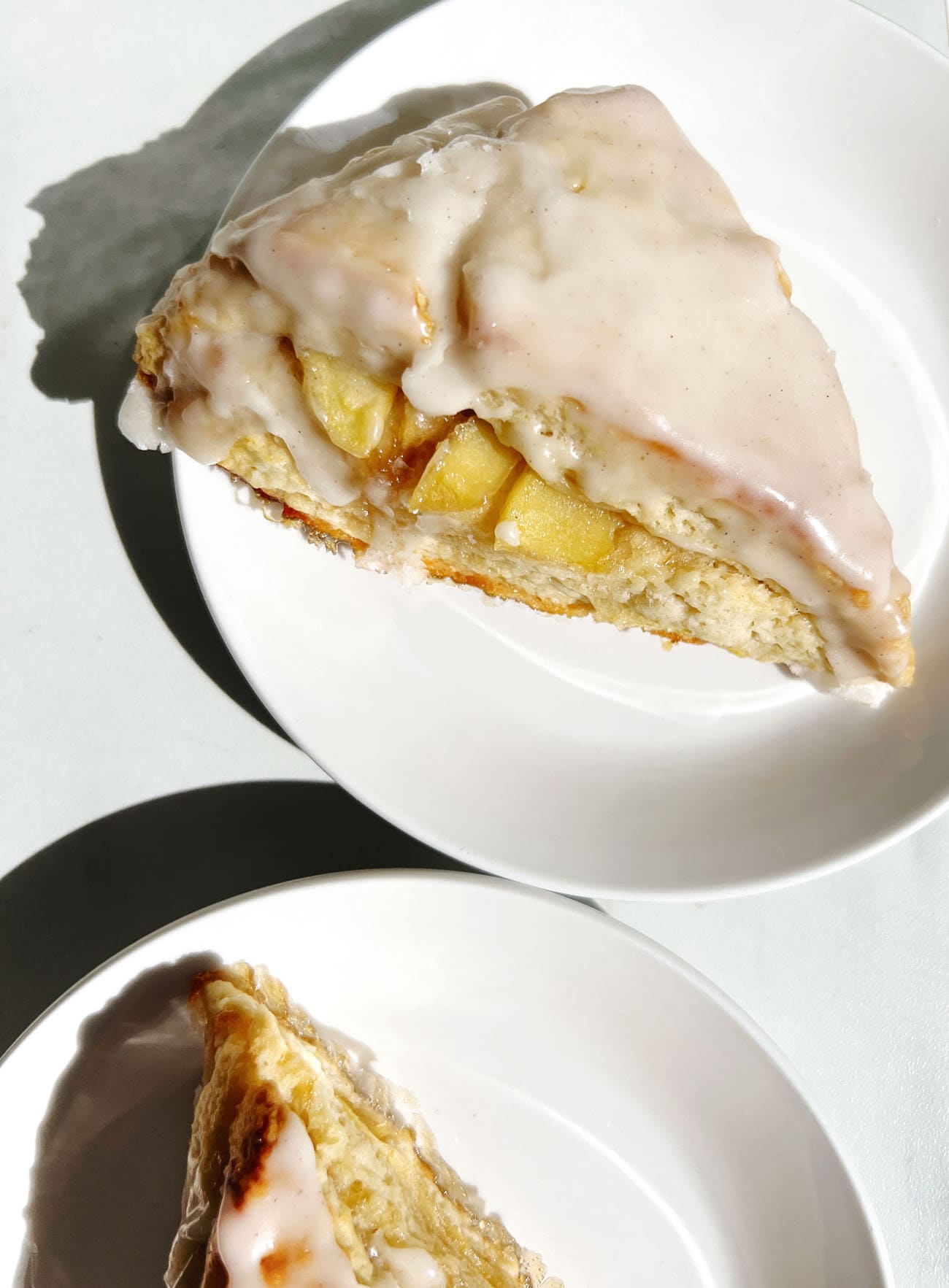
Baking with Apples
Apples take a long time to break down during baking, so often I like to give them a head start. I took a step from my Apple Morning Buns and steam the apples; I found steaming the apples in apple cider not only helped the apples soften, but also pumped them full of more flavor as the cider soaked into the apples. If you do not have cider on hand you can use water to steam them instead, but note that the cider adds a lot of extra flavor. If you skip the steaming step, the apples may still be crisp inside the scones after baking.
Helping Scones Keep Their Shape
Sometimes the tip of the scone triangle will slip down the side of the scones during baking. I peek in the oven a couple times during the baking and if I see this happening, I take a knife and gently nudge the scone tip back in place. Freezing the scones longer will help them hold their shape better; they can be frozen for up to two weeks.
To Prevent Scones from Over-Browning
NOTE: Putting another baking sheet nestled directly underneath the one the scones are on helps keep the bottoms of the scones from browning too quickly before they fully bake. If you like the bottoms extra crisp, you can just use one pan.

More Apple Recipes:

Tender Double Apple Scones
Ingredients
Apples
- 1 1/4 cup [180 g] Gala apples, peeled and sliced into 1/8 in [3 mm] slices; about 2 medium apples
- 1/4 cup [60 g] apple cider
Scones
- 1/2 cup [120 g] crème fraîche or sour cream
- 1 large egg
- 1 large egg yolk
- 1 teaspoon pure vanilla extract
- 2 1/4 cups [320 g] all-purpose flour*
- 1/4 cup [50 g] granulated sugar
- 1 tablespoon baking powder
- 1/2 teaspoon salt
- 12 tablespoons [1 1/2 sticks or 170 g] cold unsalted butter cut into ½ in [12 mm] pieces
- 2 tablespoon apple butter or other jam
- Heavy cream, for brushing
Icing
- 2 to 4 tablespoons reserved apple cider
- 1 tablespoon unsalted butter, melted
- 1 teaspoon apple jack or brandy, optional
- 1/2 teaspoon pure vanilla extract
- 1/2 teaspoon ground cinnamon
- Pinch salt
- 1 1/2 cups [180 g] confectioners' sugar
Instructions
For the apples
- Place the sliced apples and the apple cider in a large saucepan over medium heat. Cover the pan and let the apples steam in the cider until tender, 8 to 10 minutes. The apples should be soft, but still hold their shape.
- Strain the apples, reserving the liquid for the icing, and let both cool to room temperature.
For the scones
- Line a sheet pan with parchment paper.
- In a medium bowl or liquid measuring cup, whisk together the crème fraîche, egg, egg yolk, and vanilla. Set aside.
- In the bowl of a stand mixer fitted with a paddle, combine the flour, granulated sugar, baking powder, and salt. Add the butter and mix on low speed until the flour-coated pieces are the size of peas.
- Remove the bowl from the mixer and use a spatula to fold the wet ingredients into the dry until just combined. Transfer the dough to a lightly floured surface and knead four to six times, until it comes together, adding more flour as necessary if the dough is sticky. Pat the dough gently into a square and roll it into a 12 in [30.5 cm] square, dusting with flour as necessary. Fold the dough into thirds, like a business letter. Fold the dough into thirds again by folding in the short ends, making a square. Transfer it to the prepared sheet pan and put it in the freezer for 10 minutes.
- Return the dough to the floured surface, roll it into a 12 in [30.5 cm] square, and spread the apple butter or jam evenly over the top. Sprinkle evenly with the cooled apples, gently pressing them into the jam. Fold the dough into thirds. Turn the dough over so it’s seam-side down, and gently roll out the dough into a 12 by 4 in [30.5 by 10 cm] rectangle. With a sharp knife, cut it crosswise into four equal rectangles, then cut each rectangle diagonally into two triangles. Transfer the scones to the prepared sheet pan and freeze the scones while the oven is preheating (freezing the scones help them retain their shape; scones can also be frozen for up to two weeks before baking).
- Meanwhile, position an oven rack in the middle of the oven and preheat the oven to 375F [190C]. Stack the sheet pan with the scones on another sheet pan (double-stacking the sheet pans helps prevent the bottoms of the scones from browning too quickly). Brush the tops of the triangles with a little heavy cream, making sure it doesn’t drip down the sides. Bake until the tops and bottoms are light golden brown, rotating the pans halfway through, 18 to 25 minutes.
For the icing
- While the scones are baking, in a medium bowl, whisk together 2 tablespoons of the strained apple cider, melted butter, vanilla, brandy (if using), cinnamon, and salt until smooth. Add the confectioners’ sugar and mix together, then whisk until well combined and smooth. Add more apple cider, 1 tablespoon at a time, to thin the icing to your preferred consistency; the icing should be thick but pourable. If you run out of the reserved apple cider, you can use fresh cider or water instead.
- Transfer the top sheet pan to a wire rack and ice the scones immediately, using the back of a spoon or an offset spatula. Scones are best eaten the same day they are made.
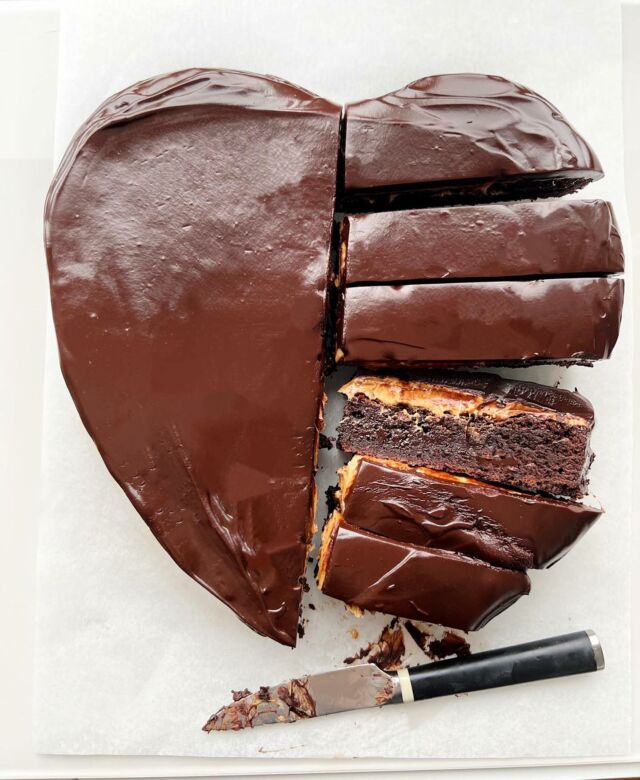
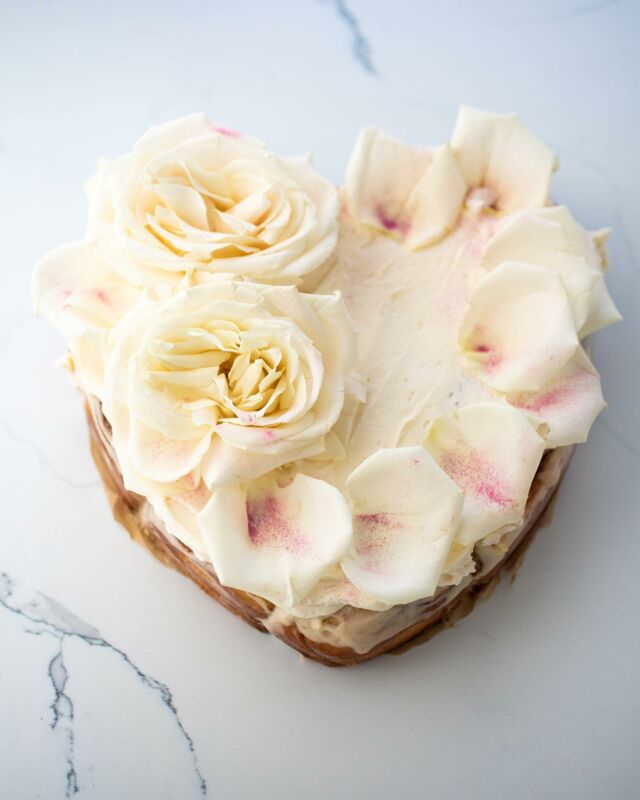
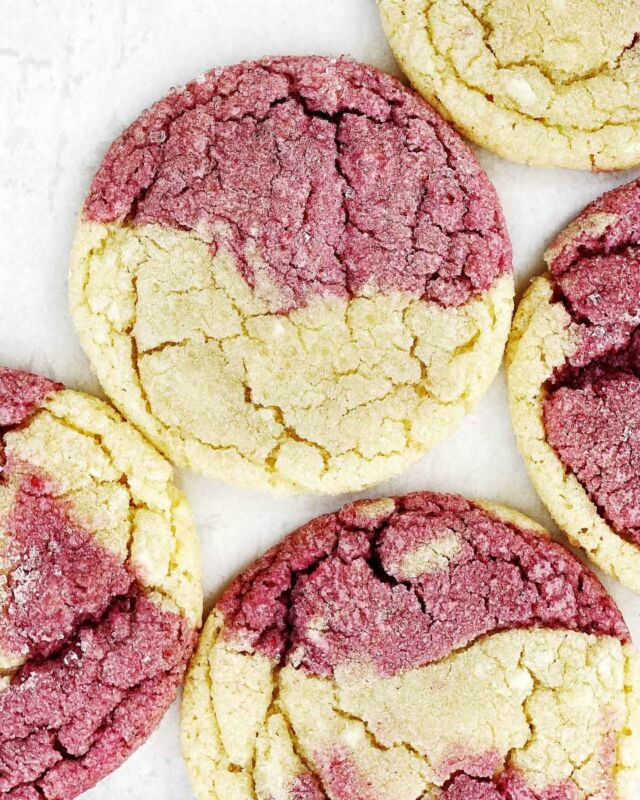

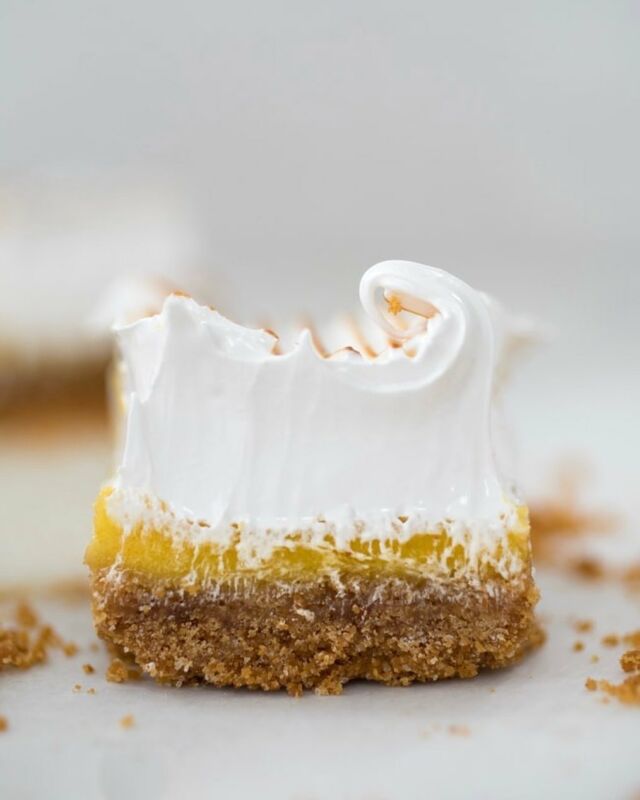
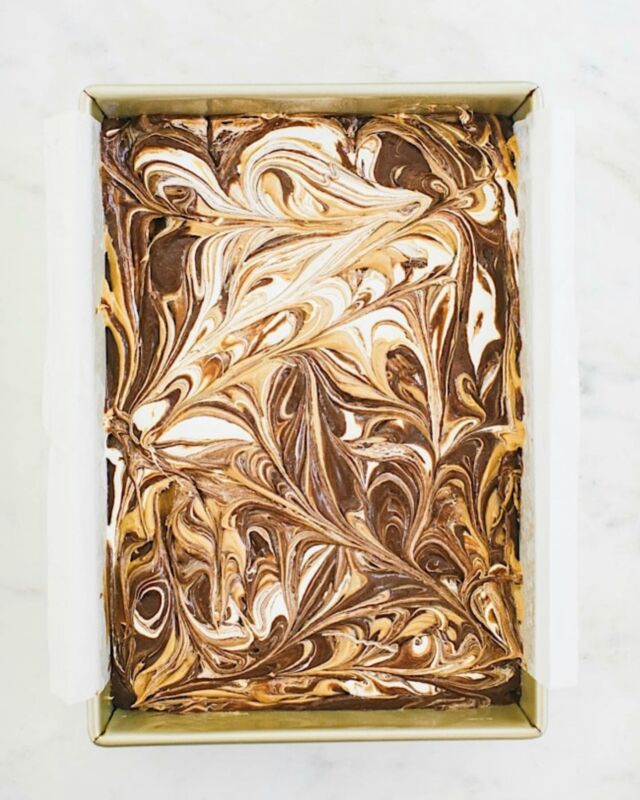
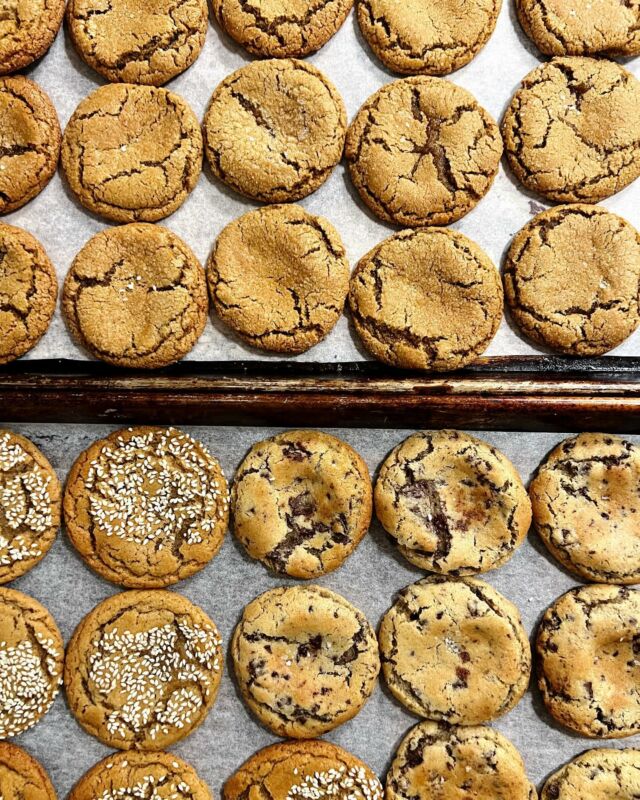
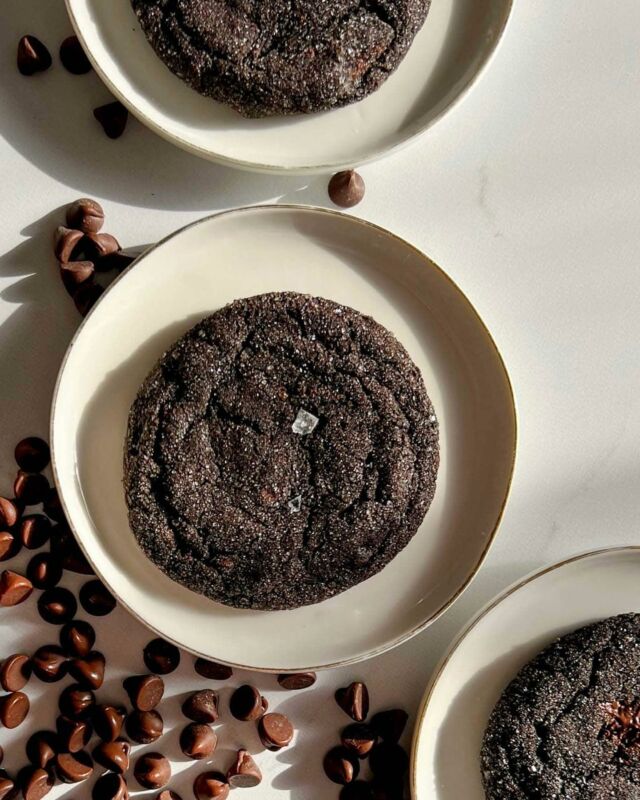

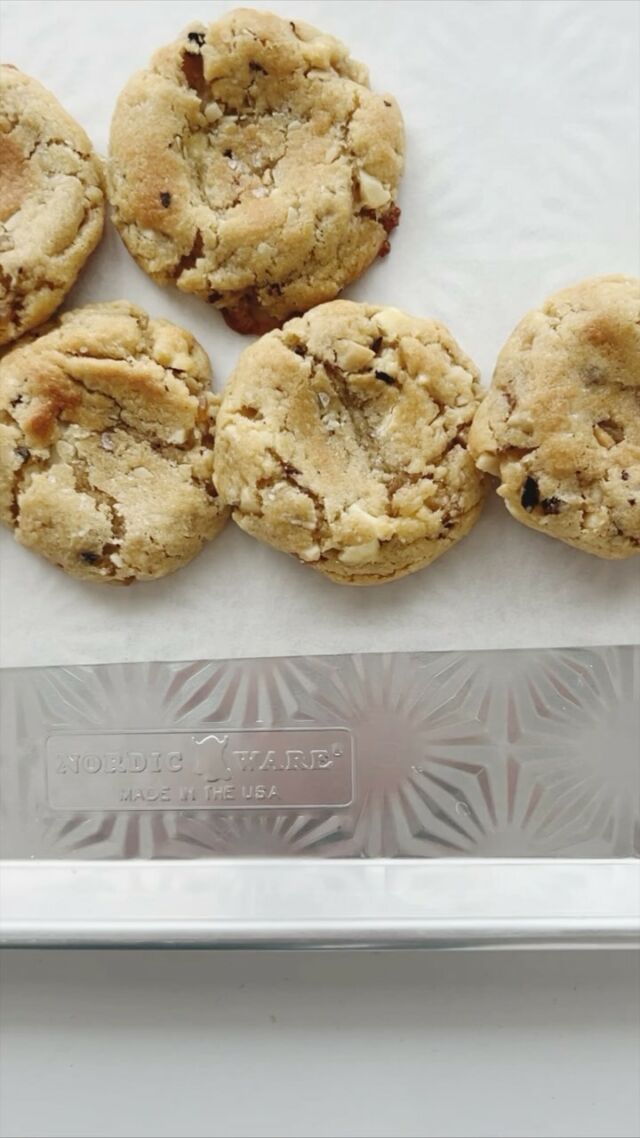


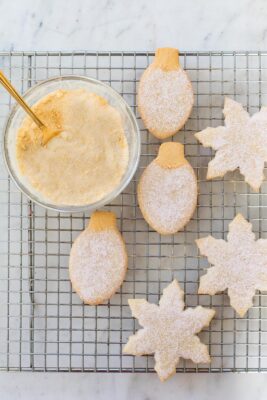
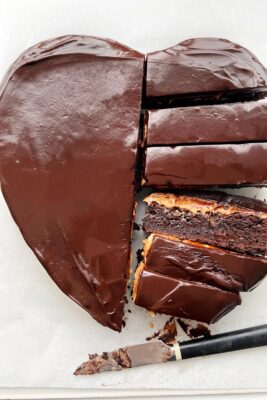
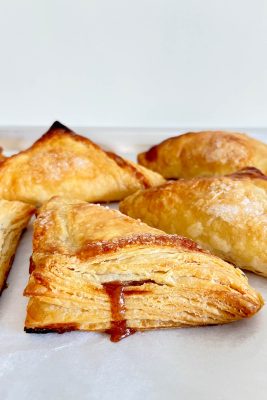
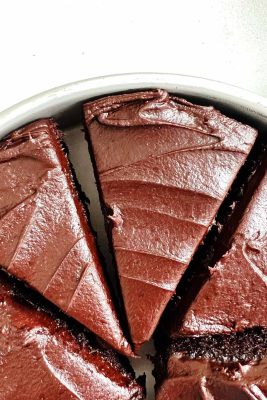
4 Comments
Kayla
Sunday, March 2, 2025 at 10:08 pmThese are incredible. Best scones I have made (and consumed).
Natalie
Sunday, January 19, 2025 at 4:04 amSensational. Delicious scones. I have my own basic recipe but this is so delicious and light and flaky and all the good things. I however, was convinced that the ingredient of apple cider was actually apple cider vinegar (that I just happened to have in my pantry) and that’s what I cooked my apples in. LOL what a dumby I am. Anyway I just added a spoon of brown sugar and some vanilla to cover the vinegar flavour. It was fine and to be honest the dough is so delicious it didn’t matter one bit.
Norma
Sunday, November 17, 2024 at 3:00 pmAs usual, another hit!! . This recipe is perfect. Tastes delish and easy to make.
Sabrina
Monday, November 4, 2024 at 7:02 pmwonderful, scones plus apple butter and apples, my kind of scones and scones are my kind of bakery! So thank you!